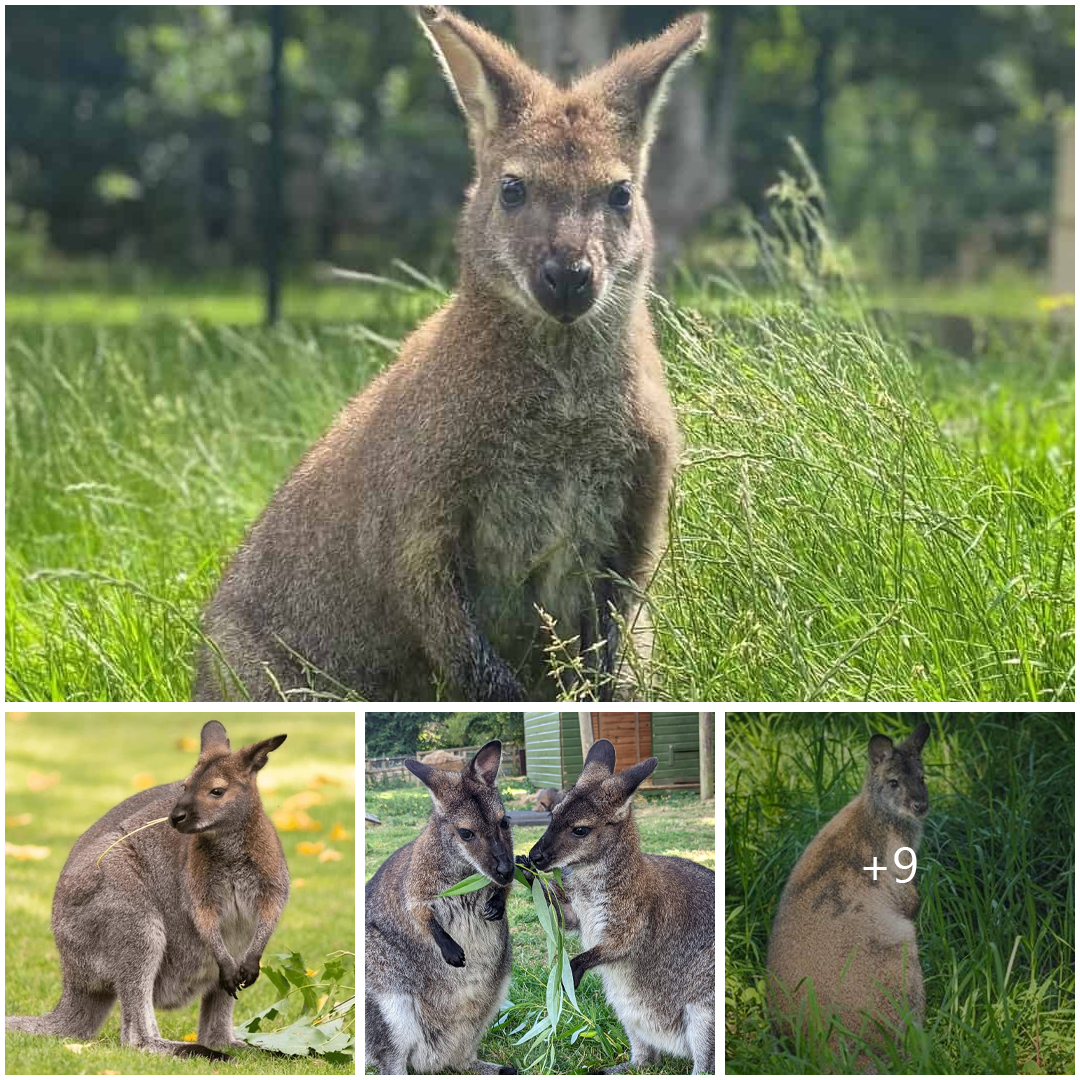
Bennett’s Wallaby: Australia’s Iconic Marsupial of the Bushlands
Bennett’s wallaby, scientifically known as Macropus rufogriseus, is a charismatic marsupial species endemic to the diverse landscapes of Australia. With its endearing appearance, distinctive behavior, and vital ecological role, the Bennett’s wallaby holds a special place in the hearts of Australians and wildlife enthusiasts around the world.
One of the most recognizable features of Bennett’s wallabies is their compact size and robust build, with adults typically weighing between 15 to 30 kilograms and measuring up to one meter in length from head to tail. Their fur varies in color from gray to reddish-brown, providing effective camouflage in their natural habitats, which range from dense forests to open grasslands.
As herbivores, Bennett’s wallabies play a crucial role in shaping their ecosystems by grazing on a variety of plant species, including grasses, herbs, shrubs, and ferns. Their selective feeding behavior helps maintain vegetation structure and diversity, creating habitat niches for other wildlife species and contributing to overall ecosystem health.
Bennett’s wallabies are also known for their agility and adaptability, enabling them to navigate a wide range of terrain types with ease. From leaping over fallen logs to bounding through dense undergrowth, these marsupials are well-equipped to thrive in the ever-changing environments of the Australian bushlands.
Like other marsupials, Bennett’s wallabies carry their young in a pouch, where joeys are nurtured and protected until they are old enough to venture out on their own. The pouch provides a safe haven for newborns, allowing them to develop and grow while remaining close to their mother’s warmth and milk supply.
Despite their widespread distribution and relative abundance in many parts of Australia, Bennett’s wallabies face various threats to their survival, including habitat loss, fragmentation, and competition with introduced species such as feral livestock and invasive predators. Human activities such as land clearing, urban development, and vehicle collisions also pose significant risks to wallaby populations.
Conservation efforts aimed at protecting Bennett’s wallabies and their habitats are essential for ensuring the long-term survival of this iconic species. Initiatives focused on habitat restoration, predator control, and public education can help mitigate the threats facing wallabies and promote coexistence between humans and wildlife in Australia’s bushlands.
In conclusion, Bennett’s wallaby serves as a symbol of Australia’s rich biodiversity and natural heritage. By safeguarding their habitats and embracing responsible land management practices, we can ensure that future generations have the opportunity to admire and appreciate these remarkable marsupials in the wild.





